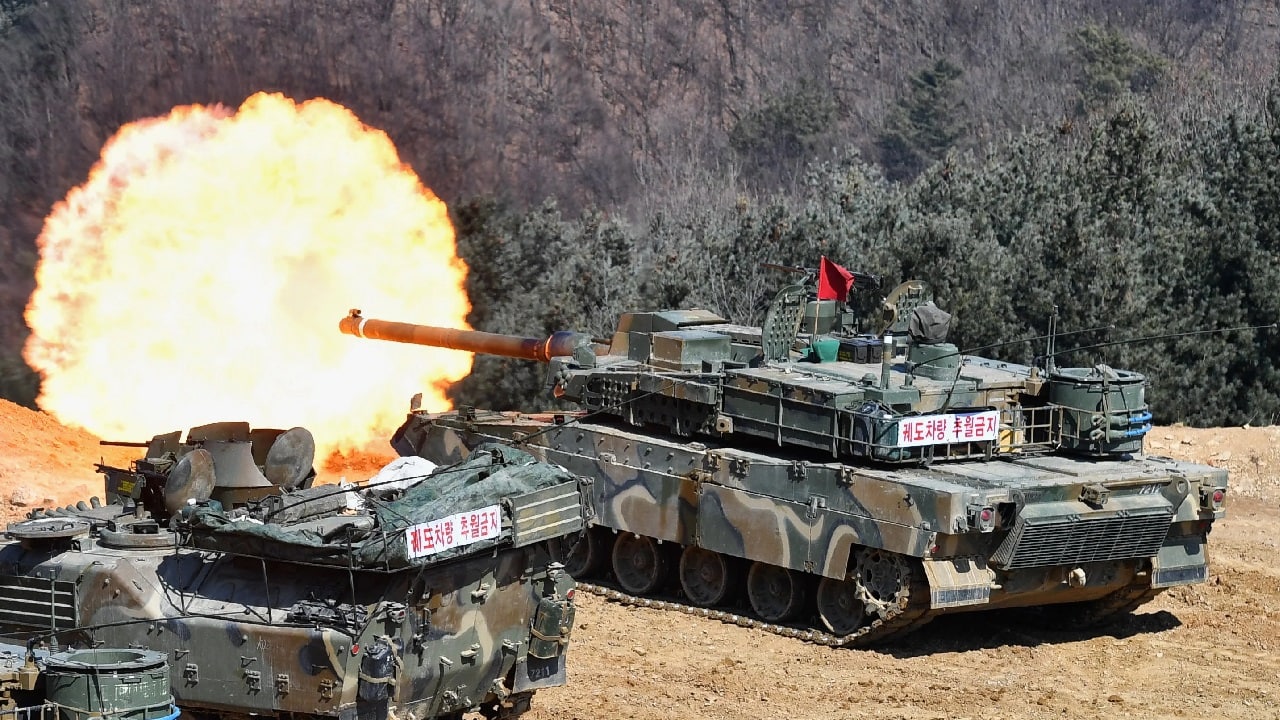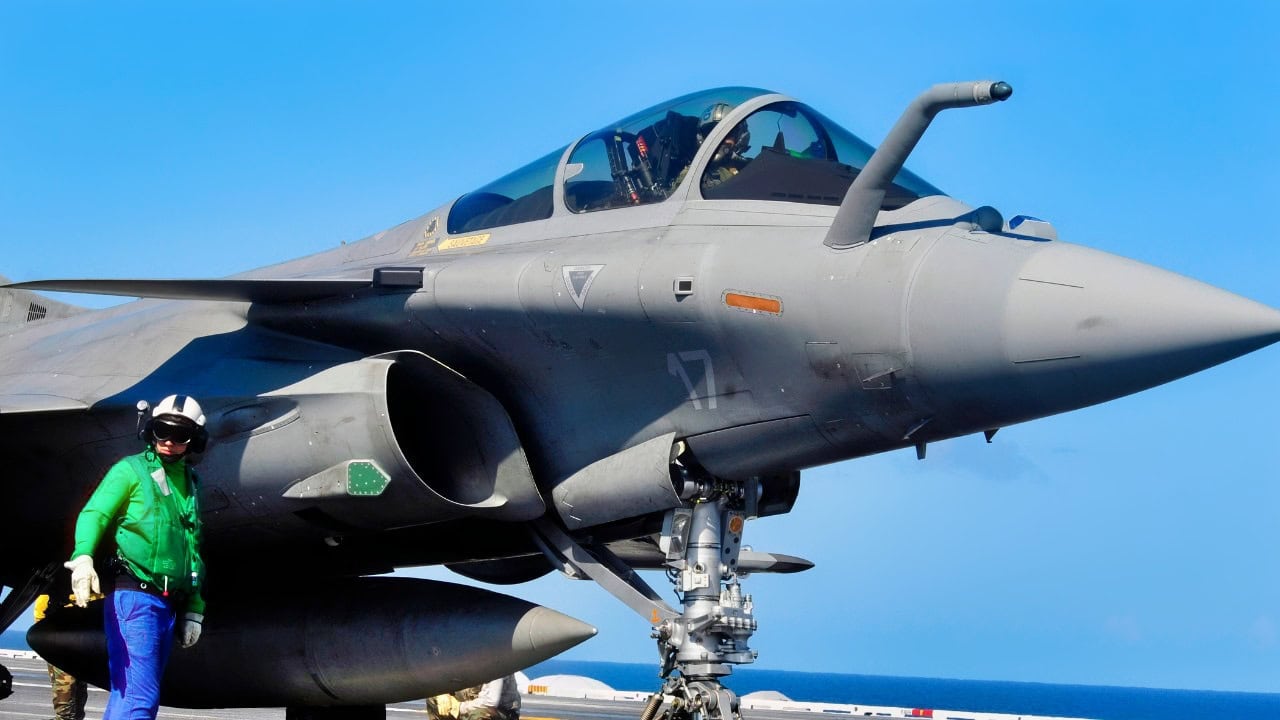This past weekend’s Munich Security Conference (MSC) highlighted increasing differences between Washington and Brussels on how to address the future of European security in general – and the future course for the continuing support of Ukraine in its war against Russia in particular.
That story, largely focuses on the controversial address to the forum delivered by US Vice President J. D. Vance.
Less noticed and perhaps more relevant for the future of the war in East were the statements made by Danish PM Mette Frederiksen at the same conference.
Ukraine, she stated, is designing and manufacturing weaponry “faster and cheaper” than any other nation in Europe despite being at war, which she said “alarm” the West. Europe must increase defense production, she continued – and should be cooperating with the US to do so.
“We have a problem, friends, if a country at war can produce faster than the rest of us,” she said. “I’m not saying we are at wartime, but we cannot say we are at peacetime anymore. So, we need to change our mindset.”
Can Europe Defend Itself? The Ukraine Reality
“Changing that mindset” is a task senior Pentagon officials have been trying to motivate the Europeans to engage in for decades.
One of the most respected US defense policymakers who spoke of this often – and who was also highly respected in many European defense institutions – was the late Andrew Marshall.
Marshall ran the DoD’s Office of Net Assessment for 42 years before retiring in 2015. During the many meetings I had with him over a period of more than three decades he was increasingly discouraged by how Washington’s allies on the other side of the Atlantic were steadily downsizing both their capacities to build new-generation weaponry and the armed forces establishments that were need to operate them.
“The Europeans,” he said to me more than once, “have spent at least the last twenty years by going out of the business of defending themselves.”
An example of his blunt evaluation would be steadily declining production rates for some of the most-advanced European weapons systems – weapons that would now be critical to victory in any major confrontation with Russia.
Vice President JD Vance referred to this in his speech when he stated both the US and Europe were “not producing nearly enough” and that Russia produces more ammunition within three months than NATO nations do collectively in a year.
Procurement dropped off in this century dramatically due Western Europen founding members of NATO having been unwilling to confront “the true danger of Putin’s Russia.” So writes Keir Giles in his December 2024 book, Who Will Defend Europe?: An Awakened Russia and a Sleeping Continent.
Giles, a leading analyst on European defense and Russia at Chatham House in London, argues, “for some people it is hard to imagine that in the twenty-first century, Europe is once again threatened by a megalomaniac dictator. … After all, figures like Hitler and Napoleon are supposed to be the stuff of history,” but “Putin’s intention to take what he (and many Russians) see as rightfully theirs has never been clearer.”
And an eventual defeat of Russia also offers little relief of the need to expand armaments production. “Even when Russia’s war on Ukraine ends, there will be no simple return to the notional state of peace that much of Europe liked to think it enjoyed before 2022,” he writes. “We are once again living in an era where brute military force will determine the lives and futures of millions of people across the continent.
France’s (And Everyone Else’s) Monumental Effort
One of the major European arms manufacturing nations is France, and one of its standout products is the Dassault Aviation Rafale fighter. But although the aircraft is procured both by the Armée de l’air et de l’espace and in a carrier-capable version for the Marine Nationale and also has more than 100 export orders, its build rate for years has been only an average of 11.2 per annum.
The company had been trying to increase this by an average of 3 per month in 2024 and 36 per year thereafter.
This means tripling the assembly line tempo within just one year – a feat described as requiring a “monumental effort” by Dassault and its major partners on the program.
During the MSC, Dovilė Šakalienė, the Lithuanian defense minister, addressed the issue head-on, stating “Europe needs to up our defense spending very fast and very significantly to be able to stand on equal footing with the United States.”
“One of the reasons, Ukraine is building so many weapons so rapidly comes down to just three words,” said a leading defense industrial official in Warsaw. “It’s all about ‘economies of scale.’ Everyone knows that the fewer you build of a weapon system the higher the per unit cost.”
Poland is trying to buck this trend and lower procurement costs by ordering its weapons in sizeable numbers – dozens of new fighter jets from South Korea and the US, massive orders of armored vehicles and artillery also from Seoul, a large fleet of the Apache attack helicopter and so on.

K2 Black Panther. Image Credit: Creative Commons.
“Many of the same weapons that Poland is buying from the US, Europe and others could be built in Ukraine, utilizing their very capable defense industrial base,” said the same official in Warsaw. “But in order for this to happen there will need to be – particularly in the case of the US – a virtual revolution in streamlining the process of technology releasability and transfer.”
Foreign export sales and any agreements on licensed production of US military hardware for our allies and partners are subject to a labyrinthian process that Sandy Long, a senior advisor in the office of the deputy assistant secretary of the Army for defense exports and cooperation, described last September as “too expensive and too slow.”
Long, speaking at the National Defense Industrial Association’s (NDIA) annual conference, elaborated further saying “my concern is that we are going to get to a point where we can’t get it [foreign purchases of US hardware] to them fast enough…we are going to cost lives because we are not able to produce things fast enough for that protection that every country feels they need.”
About the Author: Reuben F. Johnson
Reuben F. Johnson is a survivor of the February 2022 Russian invasion of Ukraine and is now an Expert on Foreign Military Affairs with the Fundacja im. Kazimierza Pułaskiego in Warsaw. He has been a consultant to the Pentagon, several NATO governments and the Australian government in the fields of defense technology and weapon systems design. Over the past 30 years he has resided in and reported from Russia, Ukraine, Poland, Brazil, the People’s Republic of China and Australia.

